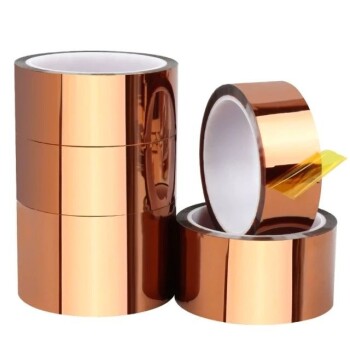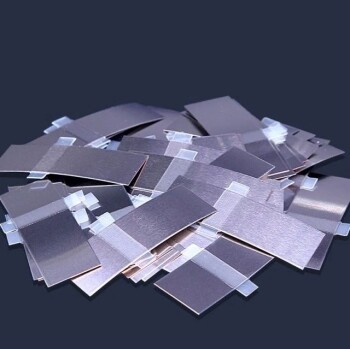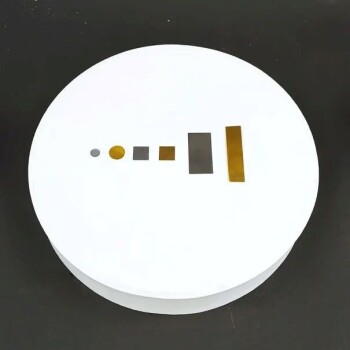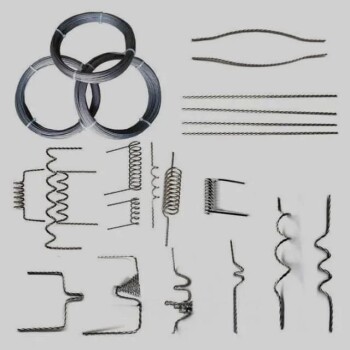In ideal conditions, creating a single solder joint takes just 2-5 seconds. However, the total time for a soldering project can range from ten minutes for a simple kit to many hours for a complex circuit board. The actual time is dictated less by the act of melting solder and more by your preparation, skill level, and the complexity of the task.
The time it takes to physically melt solder is negligible. The real time investment is in proper preparation, component setup, and developing the skill to create a reliable connection without damaging your project.
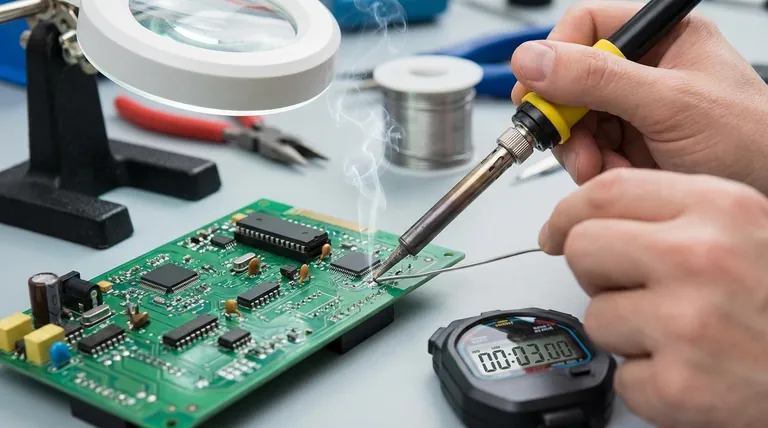
The Anatomy of a Single Solder Joint: A Seconds-Long Process
A common benchmark for a standard electronic component is the "three-second rule." While not a rigid law, it serves as a mental model for the speed and efficiency of a good solder connection.
The "Three-Second Rule"
This guideline suggests that the entire process of heating the joint and applying solder should take about three seconds. Any longer, and you risk damaging the component or the circuit board; any shorter, and you may create a weak, unreliable connection.
Step 1: Heating the Pad and the Lead (~2 seconds)
The most critical step is heating the workpiece. You must press the tip of your hot soldering iron so that it simultaneously touches both the copper pad on the circuit board and the metal lead of the component. This ensures both parts reach the proper temperature together.
Step 2: Applying the Solder (~1 second)
With the iron still held in place, you touch the tip of your solder wire to the opposite side of the joint, away from the iron's tip. If the parts are hot enough, the solder will melt instantly and flow smoothly around the lead and onto the pad, creating a clean, volcanic or cone shape.
Step 3: Cooling and Inspection (~5-10 seconds)
Immediately remove the solder, then the iron. Allow the joint to cool undisturbed for a few seconds until the solder solidifies, turning from a liquid sheen to a slightly less shiny solid. A quick visual inspection confirms the joint is good.
Factors That Dictate Your Total Soldering Time
The seconds spent on each joint are only one part of the equation. Several other factors have a much larger impact on how long your project will take.
Your Skill and Experience Level
A beginner will naturally be slower. You will spend more time thinking about each step, positioning your tools, and potentially correcting mistakes. An experienced technician relies on muscle memory and can work much more quickly and consistently.
The Complexity of the Project
Soldering three resistors onto a practice board might take five minutes. Assembling a board with dozens of components, multiple connectors, and delicate integrated circuits (ICs) can easily take hours. The number of joints is the most direct multiplier of time.
Preparation and Setup
For many projects, setup is the most time-consuming phase. This includes organizing and identifying all components, cleaning the circuit board, setting up your workspace, and "tinning" the tip of your soldering iron. Proper preparation dramatically speeds up the actual soldering process.
The Type of Components
Through-hole components, whose leads pass through holes in the board, are generally easier for beginners but can be slower to assemble in bulk. Surface-mount devices (SMD) are much smaller components that sit on top of the board. They can be soldered much faster by an experienced user with the right tools (like hot air or reflow ovens) but present a steep learning curve.
Understanding the Trade-offs: Speed vs. Quality
Attempting to solder too quickly without the requisite skill is a common mistake that leads to poor results and more time spent on rework.
The Risk of a Cold Solder Joint
If you don't apply heat for long enough, the solder won't flow correctly and won't form a proper electrical and mechanical bond. These cold joints often look dull, cracked, or lumpy and are a primary source of circuit failure.
The Danger of Overheating
Conversely, leaving the iron on the joint for too long (e.g., more than 5-10 seconds) can cause serious damage. You can destroy sensitive components like transistors or ICs, or even cause the copper pad to detach from the board itself—a phenomenon known as a lifted pad, which is often difficult to repair.
Rushing Leads to Mistakes
Moving too quickly often results in errors like solder bridges, where solder accidentally connects two adjacent joints, creating a short circuit. Finding and fixing these mistakes takes far more time than soldering carefully in the first place.
How to Solder Efficiently and Effectively
Your goal should be to become consistent and accurate, not just fast. Speed is a natural byproduct of good technique.
- If your primary focus is learning the skill: Forget the clock entirely and focus on the process. Practice on scrap boards to develop a feel for how the solder flows, and aim for a perfect, shiny joint every time.
- If your primary focus is completing a simple kit: Do all your preparation first. Organize and lay out every component, then solder them in batches (e.g., all resistors, then all capacitors) to develop a rhythm.
- If your primary focus is improving your speed for production: Invest in quality tools. A good temperature-controlled soldering station, proper lighting, and an organized workspace are the biggest force multipliers for efficiency.
Mastering the process, not just chasing the clock, is the key to becoming a fast and proficient solderer.
Summary Table:
| Task | Estimated Time | Key Factor |
|---|---|---|
| Single Solder Joint | 2-5 seconds | Skill & Technique |
| Simple Project (e.g., kit) | 10+ minutes | Preparation & Complexity |
| Complex Circuit Board | Several hours | Number of Components & Experience |
| Setup & Preparation | Varies (often longest phase) | Workspace Organization |
Ready to elevate your soldering precision and efficiency? KINTEK specializes in high-quality lab equipment and consumables, including temperature-controlled soldering stations and tools designed for reliability and speed. Whether you're a beginner learning the craft or a professional optimizing production, our solutions help you achieve perfect joints without the risk of cold solder or overheating. Contact us today to find the right soldering equipment for your laboratory needs!
Visual Guide
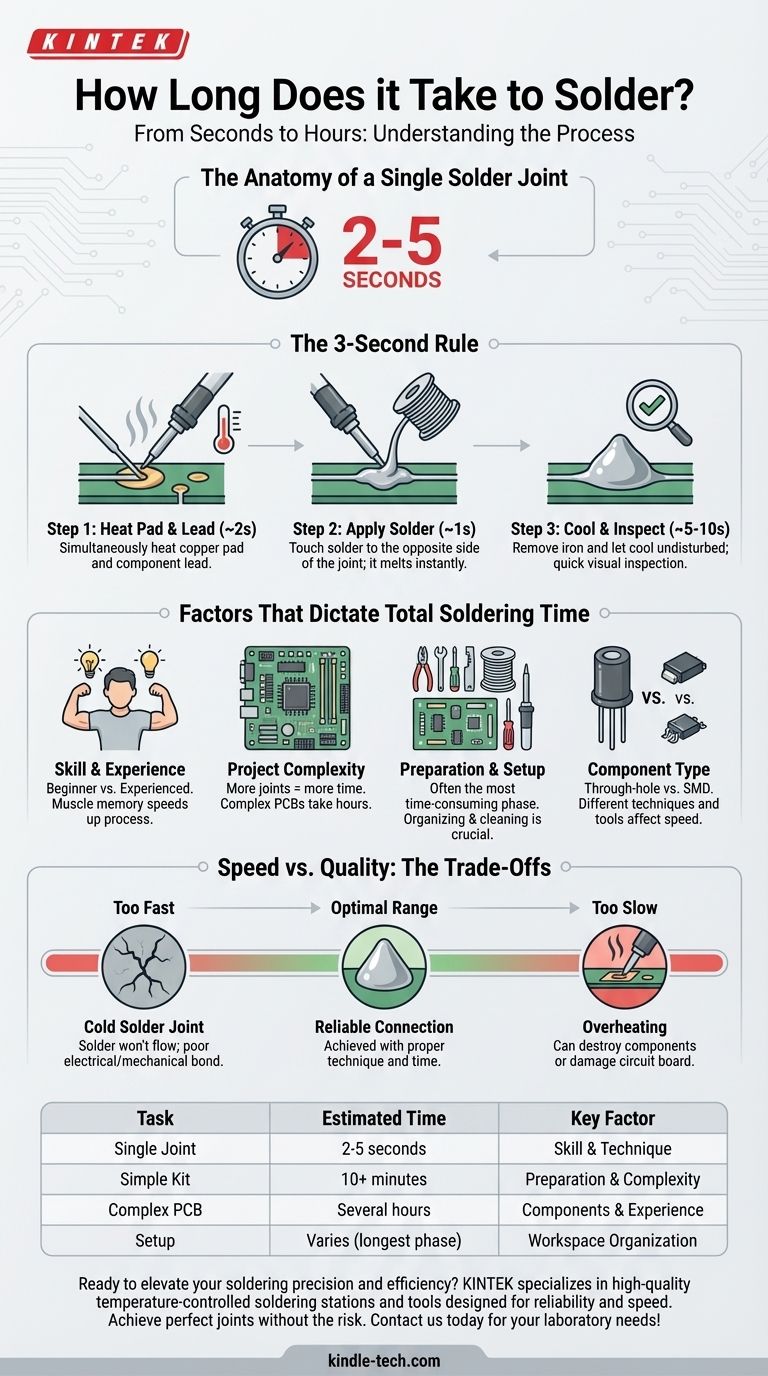
Related Products
- Assemble Square Lab Press Mold for Laboratory Applications
- Lithium Battery Tab Tape for Battery Lab Applications
- Square Lab Press Mold for Laboratory Applications
- Automatic Heated Hydraulic Press Machine with Heated Plates for Laboratory Hot Press 25T 30T 50T
- Electrode Polishing Material for Electrochemical Experiments
People Also Ask
- How to use a press mold? Master the Art of Creating Consistent Ceramic Forms
- What is a pellet die? A Guide to Creating Uniform Solid Samples from Powder
- What is a press mold used for? Achieve Repeatable Precision and Efficiency
- Is it fitting the mould or mold? A Guide to Correct Spelling by Region
- What are the parts of a press mold? A Guide to Punch, Die, and Key Components

